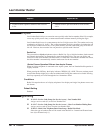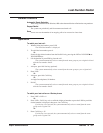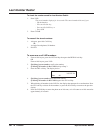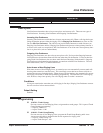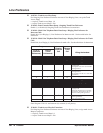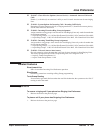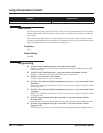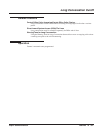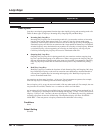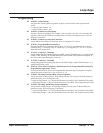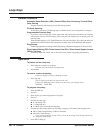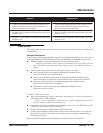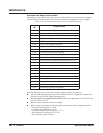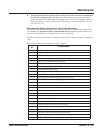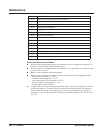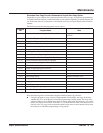
Loop Keys
388 ◆ Features Aspire Software Manual
Loop Keys
Description
Loop keys are uniquely programmed function keys that simplify placing and answering trunk calls.
There are three types of loop keys: Incoming Only, Outgoing Only and Both Ways.
● Incoming Only Loop Keys
Incoming Only loop keys are for answering trunk calls. An extension can have an incoming
loop key for a specific trunk group (fixed) or a “catch all” loop key for any trunk group
(switched). Fixed loop keys allow an extension user to tell the type of call by the ringing key.
Switched loop keys are ideal for an extension with a large number of feature keys. In addition,
switched loop keys are a destination for any trunk not on a line key or fixed loop key. Without
a switched loop key, calls not appearing on a line key or fixed loop key will ring only the
CALL key. Incoming Only loop keys also receive Transferred trunk calls.
● Outgoing Only Loop Keys
Outgoing Only loop keys are for placing trunk calls. An extension can have outgoing loop
keys for a specific trunk group or for ARS access. When a user presses the loop key, they get
dial tone from the first available trunk in the group (or from ARS if programmed). Outgoing
Only loop keys help ensure that an extension will always have a key available for placing
calls.
● Both Ways Loop Keys
Both Ways loop keys combine the functions of both Incoming Only and Outgoing Only loop
keys. Both Ways loop keys work well for extension users that handle a moderate amount of
calls and don’t separate keys for incoming and outgoing calls. Both Ways loop keys also
receive Transferred trunk calls.
An extension can have many loop keys - of any type. You can program an operator, for example,
with four loop keys for incoming calls and four for outgoing calls.
Once a loop key call is set up, the user can handle it like any other trunk call. For example, the user
can place the call on Hold, Transfer it to a co-worker or send it to a Park Orbit.
An incoming call will ring the first available loop key, beginning with the lowest numbered key. If
keys 1-3 are loop keys, for example, the first incoming call rings key 1. If key 1 is busy, the next call
rings key 2. If keys 1 and 2 are busy, the next call rings key 3. If all three keys are busy, additional
incoming calls queue for the first available key. The telephone display will show “WAITING -
LOOP KEY” if the user presses a loop key when there are additional calls waiting.
Conditions
None
Default Setting
Disabled.
Aspire S Aspire M/L/XL
• Available. • Available.



